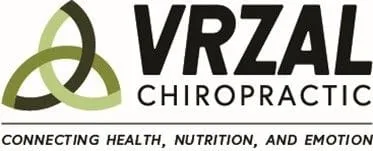ADD/ADHD, is it Sugar or MSG?
Millions of children are afflicted with the modern conditions of attention deficit disorder (ADD) and attention deficit/hyperactivity disorders (ADHD). Symptoms range on the mild side from trouble focusing in school or on homework to complete hyperactivity. All of which can be very trying on the involved parents, teachers, and peers, not to mention the emotional turmoil of the child. Over the years there have been many proposed causes and medications for its “treatment.”
It is fairly obvious how radically sugary foods affect the behavior of children. Shortly after consuming these foods the child or children’s energy will typically escalate to uncontrollable levels while their blood sugar rises to that of a humming bird. Consider the all too common scenario of the parent attempting to “bribe” their child to behave by offering them candy? This would tend to fuel the child’s already out of control energy. Eliminating these foods from the diet, or at least balancing them with whole real foods is one of the more obvious, relatively simple solutions.
A more challenging task is the other additives that often accompany the sugar and are in many other foods. They are as much of a stimulant as sugar but often unrecognized. One is aspartame; the other is monosodium glutamate (MSG). A child’s blood brain barrier is relatively undeveloped for protection against these and many other chemicals until around age eight. A much abbreviated list of the symptoms that may occur from aspartame/MSG might include hyperactivity, mental confusion, rage reactions, insomnia, sleepiness, migraine headaches, mood swings, depression, runny nose, or even asthma. Many adults have made the connection between headaches that begin after consuming MSG when it is obviously contained in a product or food. The challenge of course is that it is rarely obvious in our foods.
Of the two, aspartame is more readily identified on labels as a sweetener in one of its various trade names. However, MSG is currently not required to be identified on food labels unless it is more than 30% of the additives. MSG is the third most used flavor enhancer behind sugar and salt. Ingredients that may be identified that will contain some amount of MSG are hydrolyzed vegetable proteins, hydrolyzed proteins, yeast extract, textured protein, autolysed yeast, or hydrolysed oat flour. Additives that may contain MSG are calcium caseinate, whey protein concentrate, malt extract/flavoring, stock, broth, natural beef/chicken flavoring, or maltodexderin.
The glutamate portion of monosodium glutamate is a stimulant that people react to in varying degrees. A simple way to test our body’s ability to digest and eliminate this toxin is to place a tiny dab of glutamate on the tip of the tongue and see how long it takes for the taste to go away. This product is available free of charge at the Sports Care Center. Ideally the taste will dissipate in 2-5 minutes. In an overly sensitive person the taste may last as long as two days. Yes, that means a child may be “wired” for as long as two days on a single dose.
The vitamins necessary to break down and eliminate these toxins are B6, Magnesium, niacin (B3), N acetyl cysteine, B2, pyruvate, vitamin C and zinc. Many of these vitamins are very commonly found deficiencies in both children and adults. Properly guided supplementation of these nutrients would help one to reduce the negative effects of the MSG neurotoxin. However, avoidance wherever possible is the best prevention.
For further insight on this topic explore truthinlabeling.com, msgfree.com or simply search monosodium glutamate on the web. Books include In Bad Taste, The Feel Good Handbook, or Blaylocks, The Taste That Kills.
